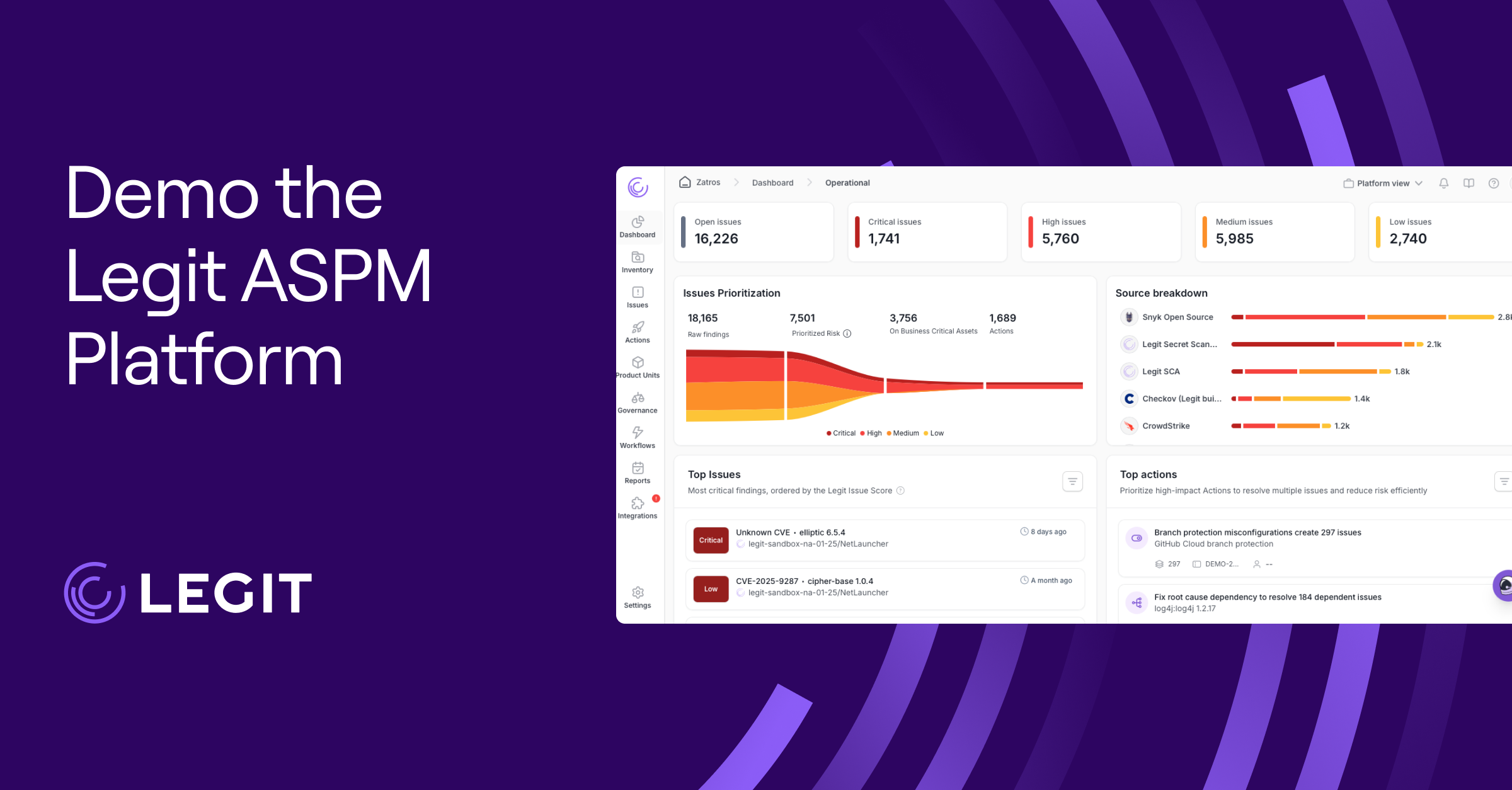Agile teams now deploy code faster than ever, but speed often leaves cracks. Some flaws don’t show up in testing – they surface later in ways that make headlines, like private chatbot conversations turning up in Google search results.
To prevent this, companies turn to software development lifecycle (SDLC) tools. More than keeping projects on schedule, they help teams spot risks early, protect data, and keep customer trust intact.
In this guide, we’ll break down the SDLC and highlight eight industry favorites shaping how teams build software today.
Software Development Lifecycle: SDLC Recap
The software development lifecycle (SDLC) is an end-to-end blueprint that development teams follow to deliver reliable software at a predictable pace and cost. Popular SDLC models include the agile model, the waterfall model, iterative, and the spiral model. Some teams create hybrid or proprietary variations, too.
Whatever the approach, the goal is to ship high-quality software quickly while maintaining security and compliance. To achieve that, organizations follow development processes that typically include seven phases:
- Requirements management: Defining what the software needs to do
- Coding: Writing the software
- Testing: Checking for bugs and quality issues
- Continuous integration: Merging and testing code frequently
- Deployment: Releasing the software to users
- Change management (version control): Tracking and managing updates to the code
What Are SDLC Tools?
SDLC tools are specialized software that automate or support various steps of the software development lifecycle. Some focus on specific phases, while others span the entire process. While you might see variations in the name, like SDLC management tools or SDLC management software, the general premise is the same.
These tools serve as a central hub for DevOps teams to coordinate development projects and successfully execute every stage. Tools for the software development life cycle integrate seamlessly with existing workflows, but it’s important to choose the right ones based on your needs, such as:
- Project management: Planning tasks and tracking progress to keep development on schedule
- Version control: Managing changes to source code so teams can collaborate without overwriting each other’s efforts
- Automated testing: Running tests automatically to catch bugs and performance issues early
- Code review: Checking code for errors, quality, and security before merging it into the main project
- Deployment automation: Releasing software updates to users quickly and reliably with minimal manual work
Why Do We Need SDLC Tools?
Agile teams make software development look easy, but the development process is complex. Established workflows and automated tools simplify the work while also reducing confusion and errors. Automation reduces manual effort, which both improves productivity and reduces mental fatigue. It also makes it feasible for teams to scale operations as needed.
Secure SDLC tools are central to addressing cybersecurity threats. Instead of waiting until after development to resolve security issues, DevSecOps teams follow a shift-left approach of integrating security into every phase of the software development lifecycle rather than bolting it on at the end.
Types of SDLC Tools
DevOps teams have no shortage of SDLC tools to choose from, which can make the selection process seem overwhelming. But grouping them into categories makes it easier to match tool types to your specific project needs.
Automation Tools
Automation takes many different forms in SDLC management tools. For example, DevOps teams use automated testing tools to create comprehensive suites that verify application functionality across different operating systems or browsers. Conversely, continuous integration (CI) platforms allow developers to automate the build, test, and deployment processes.
Project Management Tools
Project management has come a long way from Excel spreadsheets and hand-drawn timelines. While simple tools are still useful for smaller projects, larger developer teams benefit from platforms like Jira, Asana, and Notion, which provide structured workflows and requirements tracking to foster better collaboration.
Deployment Tools
Container orchestration platforms like Docker and Kubernetes have changed how developers package and deploy applications. They make it easier to create consistent environments across the software development process, from testing sandboxes to production. Many of these tools also integrate with CI/CD pipelines to automate deployments and reduce errors during release.
Source Control and Code Collaboration Tools
The larger the team, the greater the importance of tracking changes, but even small teams benefit from version control. With tools like GitHub or GitLab, developers can record when changes were made and review each other’s work. They’re also able to manage updates through pull requests, merge requests, and branching. Centralized repositories make collaborations easier by giving every team member access to the same shared codebase.
Security Tools
Regular code reviews are one of the easiest ways to keep security in check while building software. To do this, developers use tools with static analysis capabilities that identify issues with code quality or security, such as SonarQube. For deeper testing, some also turn to Kubernetes and other cloud platforms to set up sandboxes where red teams can safely probe applications for weaknesses and patch them before release.
8 Top SDLC Tools
There’s no shortage of SDLC tools on the market, but some stand out for their versatility and the value they bring to teams of all sizes. Here are eight of the most widely used options and what they’re best for.
1. Jira (Project Management)
Teams use Jira primarily for backlog management and to create a wide range of flexible workflows. It’s also a mainstay of agile project management and helps teams align work with business goals.
Use cases: Roadmaps, backlogs, Scrum and Kanban boards, issue tracking across software development
Good to know: Pairs well with Confluence for managing specs and runbooks
2. GitHut (Version Control and Code Review)
GitHut is the leading Git-based version control platform, used by more than four million organizations, including 90% of Fortune 100 companies.
Use cases: Git-based version control, GitHub actions for CI/CD, code reviews, pull requests
Good to know: Widespread use means most developers already know how to use it
3. Jenkins (CI/CD Automation)
Many consider Jenkins the gold standard for continuous integration and continuous delivery (or deployment). Its flexibility makes it an excellent SDLC tool for complex deployment scenarios.
Use cases: Automated pipelines, CI across diverse stacks, highly extensive CI server
Good to know: Has a large plug-in ecosystem and is often regarded as a cost-effective CI/CD solution
4. SonarQube (Code Quality and Security)
Developers use this open-source platform for continuous code review to find bugs and security flaws. SonarQube’s scanning tools prioritize OWASP and CWE top 25 standards.
Use cases: Securing instances and tokens, finding misconfigurations, static code analysis
Good to know: Automates the code review process and complements manual reviews
5. Kubernetes (Deployment and Orchestration)
Kubernetes is an enterprise-grade container orchestration platform, from minor testing to more complex adversarial exercises. It's a favorite among CD teams and a cornerstone of automating the deployment process.
Use cases: Testing software (including malware), container orchestration, multicloud support, microservices architectures
Good to know: Integrates well with CI/CD tools as well as Application Security Posture Management tools like Legit Security
6. BrowserStack (Cross-Browser/Device Testing)
Teams with more specific needs use BrowserStack to test web applications on real browsers across the cloud. It increases coverage without the need to maintain physical device labs.
Use cases: Manual and automated testing, shift-left UI testing, accessibility checks
Good to know: Has broad compatibility with popular tools like Jira to connect testing with project management
7. Figma (Design and Prototyping)
This graphic design tool might seem like an outlier on the list of SDLC tools, but it plays a critical role in the software development process. UX and UI designers use it to create software prototypes and illustrate workflows within apps.
Use cases: Sketches, full designs, UI/UX reviews, interactive demos
Good to know: Allows developers to show clients what the final product will look like and get approval before development begins
8. Visual Studio Code (VS Code)
VS Code is Microsoft's free, open-source editor for software development teams. It’s popular with both beginners and experienced developers.
Use cases: Writing code in multiple languages, debugging code, code review
Good to know: Can function as a full IDE with plug-ins for Git, Docker, Kubernetes, and many other development tools
Secure Your SDLC With Legit Security
Building high-quality software today requires multiple tools, processes, and safety checks. Legit Security helps teams simplify their workflows so they can deliver faster without sacrificing security or functionality.
Legit’s ASPM platform brings it all together, from compliance reporting and real-time visibility to secrets detection, static code analysis (SAST), and AI-native AppSec. With Legit, development teams spend less time managing overhead and more time shipping reliable software.
Request a demo today to see how Legit can transform your software development process.
Download our new whitepaper.


